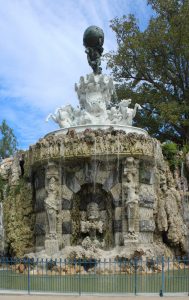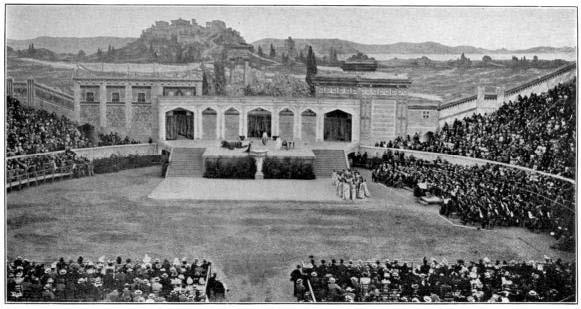While some evoke the golden age of Béziers as the one where the city’s rugby club shone across France, very few evoke another, little-known golden age, that of the end of the 19th century. and the beginning of the 20th century. Béziers then experienced unprecedented economic prosperity, an unequaled demographic explosion and was at the forefront in the lyric arts, the city then saw the “roaring twenties” before the hour, not forbidding any madness and becoming the place of all the pleasures… This is what historian Samuel Touron tells us in his column.
If Béziers is no longer the world capital of wine today, it was undoubtedly very close to the goal in the last quarter of the 19th century. All the activity of the city was then turned towards the wine domain and Béziers was innovative, it was among the very first cities in the world to industrialize the production of wine.
The first oenological laboratories as well as various industries settled in the city. A real economic dynamism ensued, the city Biterroise becoming a railway junction with its two stations, it was indeed necessary to distribute and sell the fruit of the harvest which made the economic growth of the city. It must be said that Béziers was hardly affected by the phylloxera crisis which then hit the other French wine regions hard, the city represented at this time in history 30.6% of the production of the South on the eve of the 20th century. century, quite simply gigantic.
Economic boom, demographic growth
To this economic boom must be added a demographic growth which gives birth to a new Béziers. In the space of a little over half a century, the city grew from around 15,000 inhabitants to nearly 53,000 in 1904. If Béziers had continued to grow at such a rate, it would now have nearly of 145,000 inhabitants is as much as Nîmes and more than Perpignan. We come from all the rural areas to work in Béziers, especially from the south of Massif Central, the famous gavach (Aveyron, Ardèche, Tarn, Cantal, Lozère mainly) but also other neighboring departments and the Hérault hinterland or even abroad, often at this time, Spain (Catalonia, Balearic Islands) and Italy. They then contribute to the economic development of a city that opens up to the world.
The bourgeois Béziers families grew richer and then lived in the new Haussemanian buildings in the Paul-Riquet alleys at the end of which was built, in 1844, a splendid Italian-style theater adorned with bas-reliefs made by Antoine Injalbert, the child of the country, then professor at the prestigious school of fine arts in Paris. The landowners built splendid castles on their estates which bear witness to the city’s arrogant wealth. In order to accommodate the flocking workers, the city stretches around the avenue Gambetta, on the Valras plateau and around the avenues Saint-Saëns and Clémenceau.
Considered the French Bayreuth
Béziers also becomes the center of a vibrant cultural life to the point of being considered the French Bayreuth. It is then, after Paris, the great French city of lyricism. In the space of thirty years, nearly fifteen operas were held in the arenas of Béziers founded by the patron Ferdinand Castelbon de Beauxhostes, another native of the country. Music lover and passionate about art, he swallowed up a good part of his fortune in this adventure, but he made his wildest dreams come true.
Béziers on the map of Europe of the arts
The city welcomes the greatest singers of the Paris Opera and the Scala of Milan: Béziers is then on the map of Europe of the arts. Nearly 12,000 people regularly attend the opera performances that take place in the city between May and August. The love story between Béziers and the arts does not stop there, painting also thrives, Gustave Fayet, painter and art collector offers his native town exhibitions which bring together the paintings of the greatest artists of the period going from Cézanne to Van Gogh via Monet and Gauguin. We can add the sculpture with the works of Antoine Injalbert who bequeathed not only to his hometown the war memorial on the plateau of the poets or the Titan fountain but also made it shine in Paris by making the statue of Mirabeau in the Pantheon. as well as the allegorical statues which adorn the Mirabeau bridge.
“The city center is covered with brothels which also made it famous, especially on Friday afternoons following negotiations on the price of wine …”
Symbol of this golden age for the arts of Béziers, the city has, between the station and the alleys Paul-Riquet, a magnificent English garden created by the Bühler brothers considered the elite of the profession and creators of the Tête d’Or park in Lyon. The park is adorned with statues of Béziers poets giving the garden its name of Plateau des poètes, wonderfully symbolizing the golden age reached by the city in the arts at the end of the 19th century. It also testifies to the economic prosperity of a small town in Hérault which offers itself the services of renowned landscapers to connect its new station to its new town center.

City of all successes, Béziers also became at this time the city of all pleasures. Money and wine flowing freely, the explosive cocktail is gathered: the city center is covered with brothels which also made its reputation, especially on Friday afternoons following the negotiations of the price of wine by the landowners who arrive from the countryside. Prostitution is then prosperous, that of luxury in particular, around the Paul-Riquet alleys, it is aimed primarily at a clientele of landowners but also at high officials or wealthy traders.
Whirlwind of madness that only Paris could match
We must turn to Maupassant for a description of what these brothels were: “Brothels have become“ private mansions ”. The atmosphere is always warm. It is a meeting place for the rich, where we discuss, where we play cards. “ In Béziers, at that time, it was the rue Victor-Hugo which was known as the street of nightlife with the Théâtre des Variétés and its many brothels.
It remained until 2009, a symbol of this libertine past of Béziers, at the Paul-Henri-Cugnenc roundabout still proudly stood two phalluses signaling the entrance to a closed house in the 1940s. The Couderc municipality decided to destroy it considering that it was not « touristiquement correct » at a time when we should no longer shock or dare.
Long before the gifted Montpellier, the other great city of Hérault also experienced a period of unequaled prosperity and splendor.
Economically and artistically brilliant, Béziers took advantage of a market niche created by the phylloxera crisis to enrich itself sustainably. A whirlwind of madness then seized the city which, in this opulent wealth, did not shrink from any feat, no innovation, distinguishing itself in the arts and celebrating its success by indulging in all the pleasures in splendid parties that only Paris managed to match …
Samuel TOURON
The story is on Tell them !
- Chronicle: From Jean Jaurès to Samuel Paty, common fight for freedoms, Read more …
- Occitanie : Rural exodus, migrations, history of a single settlement, Read more …
- In Montségur, these Nazi expeditions to flush out the Grail …, Read more…
- The battle of literatures in the Oc and Oïl languages, Read more …
- Municipal elections, antidotes to the coronavirus, Read more …
- From fish have covid-19, these pandemics that challenge humanity, Read more…
- When the South was on fire a century before the yellow vests, Read more…
- The forgotten history of slaves white in North Africa, Read more…
- When Toulouse was the capital of the Visigoths, Read more…
And many other subjects …
–


